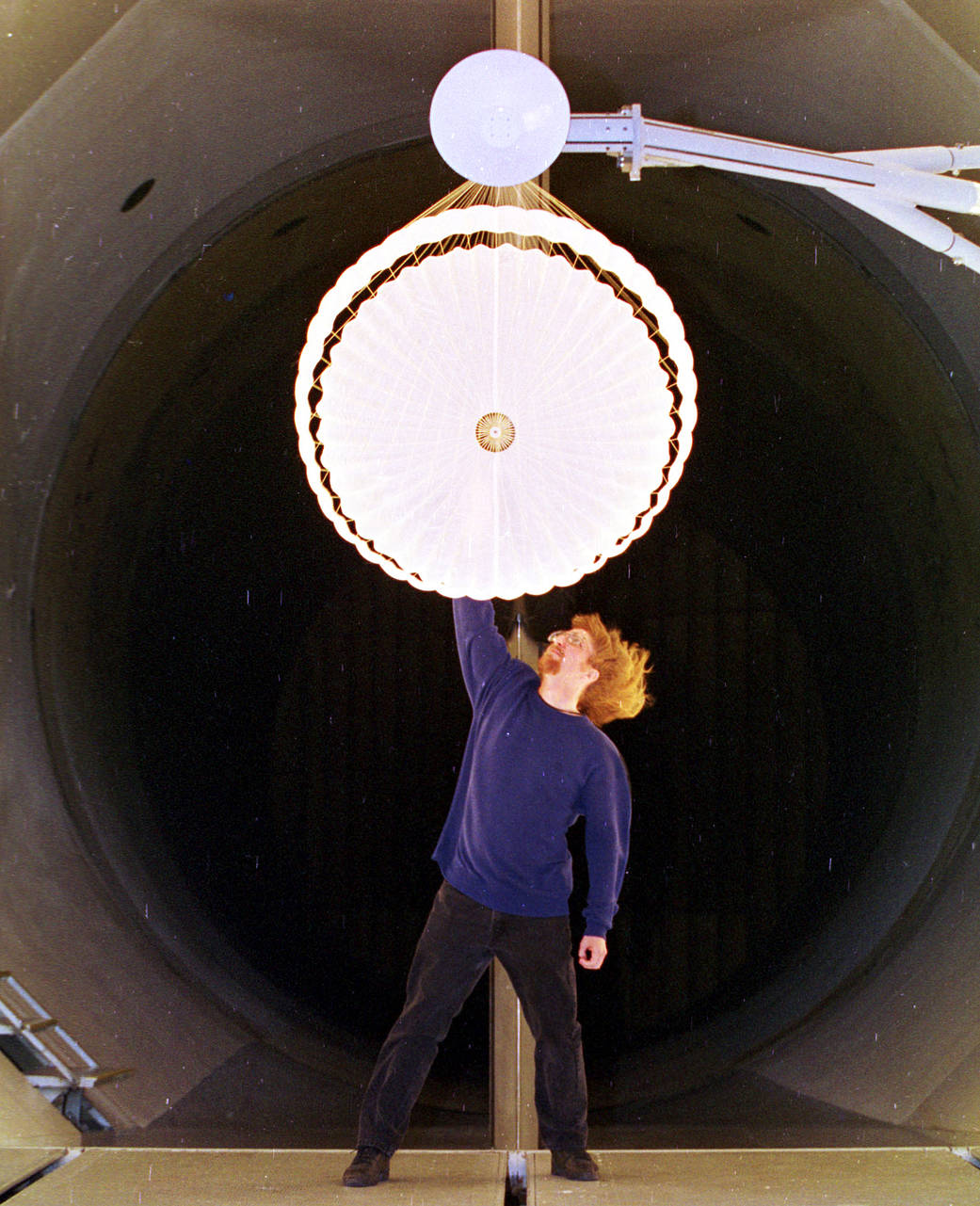January 2014 marks the tenth anniversary of the successful landing of two Mars Exploration Rovers on Mars. NASA Langley had a role in helping rovers Spirit and Opportunity make it to the Red Planet.
One part Langley researcher played was in developing and testing the parachute that helped slow the spacecraft during entry, descent and landing. “We did a lot of testing here, as well as design and analysis of the parachute,” said Prasun Desai, said the Langley Mars Exploration Rover mission lead in 2003. “We also did what we call a more sophisticated simulation, where we predict how the parachute-lander system is going to fly after the parachute has been inflated.”
Parachute designers also benefited from the experiences of the successful Pathfinder and Viking missions. But the parachute was even more crucial. Its area was 20 percent larger than Pathfinder’s. That’s because the Mars Exploration Rovers weighed considerably more than the Pathfinder rover that landed on Mars in 1997. The parachutes had to be strong enough to withstand large loads, lightweight and small enough to fit inside the capsule and produce enough drag to slow and stabilize the capsule.
“There are challenges to testing these parachutes because we can not test them at exactly the right conditions,” said Juan R. Cruz, Langley research engineer who worked on the MER parachute design and is seen in this photograph from tests in 2002. “Earth’s atmosphere is the one we have to work with and the Martian atmosphere is very different, so you have to make adjustments in how you test the parachute. Another issue is the wind tunnel models we used in our tests were ten percent scale models, about five feet in diameter.”
Credit: NASA

























